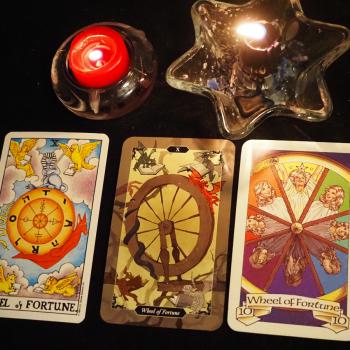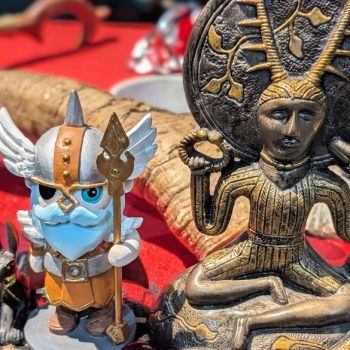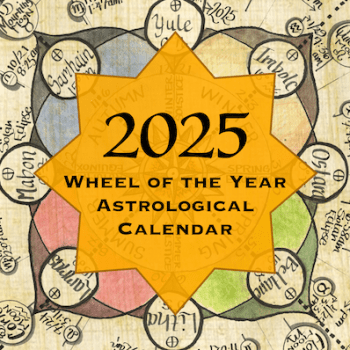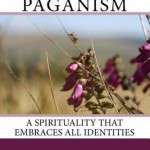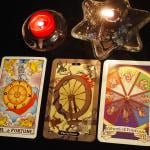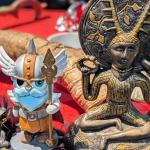In a ground-breaking book called Metaphors We Live By, Lakoff and Johnson pointed out the underlying metaphors used in many figures of speech. For example, the underlying metaphor “Argument is War” has us talking about winning an argument, wiping the floor with our opponents, and so on. Imagine how different arguments might be if the underlying metaphor was “Argument is Dance”. Another example they give is “A Relationship is a Ship”, where we talk about marriages foundering, being on the rocks, and breaking up.
Similarly, in The Inner Reaches of Outer Space: Myth as Metaphor and as Religion, Joseph Campbell explored some of the bodily metaphors underlying religious symbolism and mythology.
Metaphors are a very powerful thing. They can dictate how we we see the world, and therefore how we behave. They can constrain our expectations of what will happen, and how it will happen. The metaphorical connotations of an idea shape and limit what can be said about it.
In a comment on an earlier post, C Brachyrhynchos wrote:
Many of those metaphors involve a fair bit of projection of human cultural ideas onto things that are distinctly non-human and incomprehensible, or even human diversity. Take for example the idea of masculine and feminine as broadly applicable metaphors. That metaphor breaks as applied to many human beings who don’t experience gender that way, much less fungi that have five different sexes, androgynous algae, self-propagating plants, or, weirder still, organisms whose gender involves mutualistic relationships involving multiple other species.
And that’s not even touching the equally complex realms of the non-biological, formal, or philosophical. To say that being is Being is one thing. To say that it’s *a person* with likes and dislikes, prophetic speech, children (mortal or immortal), and a relationship is another thing altogether.
None of this is beyond the pale for religion. If it’s reasonable to consider deus a metaphor then it’s reasonable to doubt (which is the essence of atheism, not denial) the relationship between signifier and signified in that metaphor. Negative theology, the stripping away of those metaphors until you’re left with questions and uncertainty is an ancient practice.
I have written before (and so has Christine) about the limitations and negative effects of the gender binary in much of Pagan mythology. I have also argued for a more nuanced view of gender. I see that in my previous attempts to write about this, I didn’t actually move that far from the binary model, but I think I have moved further away from it now.
I also agree that the practice of stripping away metaphors until you are left with questions and uncertainty is ancient, and is a very good thing. It is known as apophatic theology or the via negativa, and it is a very important part of my spirituality. I think we need more apophatic theology in Paganism. However, according to Matthew Fox, there are four ways to engage with spirituality, of which the via negativa is only one. The others are via positiva, via creativa and via transformativa.
However, saying something is “only a metaphor” is a bit disingenuous, because we live by metaphors and they shape our thoughts.
There is hope, though, because the power of metaphors is such that if you create a new metaphor to live by, you can create a new reality. For instance, many Pagans have adopted the eightfold wheel of the year (eight seasonal festivals), and this metaphor, which expresses sacred time, has shaped our relationship with the cosmos and with Nature. So if we want to change the binary model of gender, we could create a more powerful metaphor to replace the gender binary. We can use the examples of “fungi that have five different sexes, androgynous algae, self-propagating plants, or, weirder still, organisms whose gender involves mutualistic relationships involving multiple other species” as a metaphor for the diversity we wish to celebrate in human sexuality.
Stories are very powerful. Many years ago, I saw a made-for-TV film which had the resounding slogan “Folklore can kill” (which inspired the title of this post). In the film, weird things start happening to a folklorist who is investigating urban legends – the legends are happening right in front of him, but he is in denial, insisting that folklore can’t come true… but it does.
If you attend a Pagan camp, or a UU or Unitarian church service, there will very likely be stories. What will be the bit you remember? The talks and workshops you attended, the sermon you heard, or the stories? I can guarantee that the thing you will remember will be the stories. Stories speak directly to both hemispheres of the brain, and that’s probably why they are remembered. Jack Cohen has suggested that Homo sapiens should be renamed Pan narrans, the storytelling ape. People like stories.
So if you take all the metaphors away, then you’ll have to take away all the stories. That doesn’t just mean an absence of fairy tales and folk tales and mythology; it also means an absence of inspiring stories about science, or stories from history or literature. And even in this story-free vacuum, people would instinctively create more stories.
So, given that you can’t have a metaphor-free vacuum; and given that stories and metaphors are so powerful that they can actually kill (and make no mistake, the gender binary claims a victim every time a transgender person is murdered or commits suicide) — given this, we had better make sure to choose liberating and inclusive metaphors to express our religion. And if a metaphor (such as the gender binary) is broken, then we need to fix it.
Further reading on metaphor
- Metaphors We Live By – George Lakoff and Mark Johnson, 1981 (reissued 2008)
- Women, Fire, and Dangerous Things: What Categories Reveal About the Mind – George Lakoff, 1991
- The Inner Reaches of Outer Space: Metaphor As Myth and As Religion, Joseph Campbell, 1986 (reissued 2002)
Further reading on sexuality and gender



